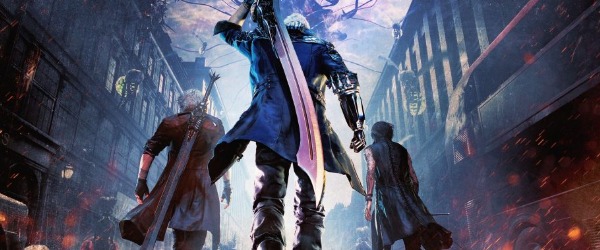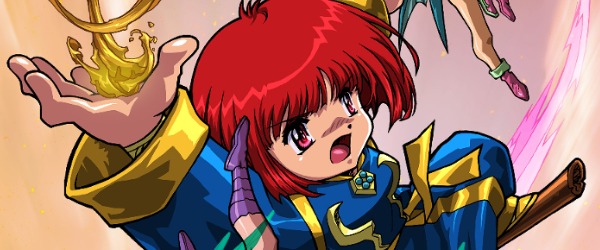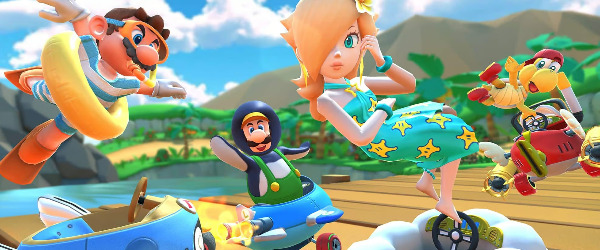
History of Metal Gear: Building the Foundation - Article
by Taneli Palola , posted on 23 October 2017 / 5,656 ViewsThe history of video games is filled with games and franchises that have pushed the medium forward in countless different ways, from creating entirely new ways to play to innovating storytelling techniques still in use today. One of these venerated series is quite possibly the strangest, most unique, and sometimes just the silliest high profile video game franchise ever: Metal Gear. Within this quirky, oddball series, discussions of nuclear annihilation and child soldiers go hand in hand with jokes about irritable bowel syndrome and psychic villains who read your memory cards to screw around with you.
In any other case a mix like this probably would not work. The tonal whiplash of such a dichotomy should render every attempt at serious storytelling pointless, but somehow Metal Gear has succeeded in its task, and while doing so has become one of the most beloved video games franchises of all time. With that said, I welcome you to this journey through the history of Metal Gear, from its humble beginnings on Japanese home computers to becoming one of the most famous video game franchises in the world in the late 90s and beyond.
Metal Gear, Snake's Revenge, and Metal Gear 2: Kojima's Vision

Before we can talk about Metal Gear, we need to talk a little about the man behind the series and its main creative driving force - Hideo Kojima. Initially, Kojima was planning on becoming a film director, but at some point during his university studies he made the decision to shift his focus to video games, something many of his friends and peers were opposed to. This was because, at that time (the early 1980s), the gaming industry was still quite young and wasn't seen as a respected or financially secure place for work.
Regardless, he eventually managed to find a job at Konami in 1986 as a designer and planner, working for the publisher's MSX home computer division. The first game he worked on for Konami was called Penguin Adventure and he took on the role of assistant designer for the title. He then followed that with his first own game called Lost Warld, but this was never released because it was rejected by his superior. Following on from this he was asked to take over a project that had been worked on by a senior associate at Konami. This game would ultimately become the first Metal Gear.
Innovating Stealth: Metal Gear

The first Metal Gear was originally meant to be an action game in the vein of many other similar titles that had been released around that time, such as Commando and its countless clones. However, upon taking over the game's development, Kojima quickly realized that the MSX2's hardware limitations, which restricted the number of objects that could be depicted on screen at any one time, would severely hamper a game with a heavy focus on combat. This resulted in him taking the game in an entirely different direction; a decision that would go on to massively influence his entire career from that point on.
Instead of focusing on combat and killing enemies, Metal Gear turned into a game where the goal was to avoid being detected by enemies. This change influenced many aspects of the game, such as the player starting without any weapons, them having limited ammunition, and the ability to hide in a cardboard box, for example. A lot of these elements would go on to define much of the entire stealth genre of video games.

In Metal Gear, players control Solid Snake on a mission to Outer Heaven, a fortified state founded by a “legendary mercenary" in Africa. While there he learns of the existence of a bipedal tank called Metal Gear, equipped with nuclear missiles and capable of launching them from any location. Outer Heaven plans to use the tank to become a new super power. The player must then locate and destroy Metal Gear to prevent the onset of a possible nuclear war.
It is eventually revealed that the leader of Outer Heaven is actually Big Boss, Solid Snake's superior and the person who originally sent him to undertake the mission. At the end of the game the two fight and Big Boss dies. However, this is later revealed to have been a body double, and the real Big Boss escaped unharmed.
This is the game where people were first introduced to not only Solid Snake, but also Gray Fox and Big Boss, all of whom would go on to feature in several later entries in the series. In addition, Metal Gear introduced several other elements that would go on to become recurring aspects of the franchise. The game's namesake is the most obvious example, but it wasn't the only such thing first seen in this game.
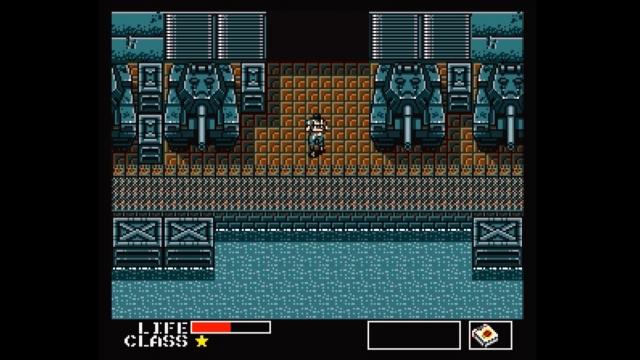
Notably, one of the series' major recurring themes - that of manipulation of soldiers by leaders of nations - is introduced in Metal Gear. This, along with the theme of nuclear war paranoia, would set the tone for most of games that would follow, giving the series a foundation upon which to build its narrative themes. In many ways these elements have stuck with the series ever since.
Metal Gear was released on July 13, 1987, in Japan on the MSX2, and later that same year in Europe. The Famicom/NES version followed soon after, and was the first platform that the game was ever made available for in North America, as the MSX2 had no commercial presence in the region. However, the NES version is commonly seen as a weaker version of the game due to some notable changes that were made to it, including two alternative level designs. Kojima himself had nothing to do with the port and later denounced the NES version entirely.
The original English version in general has a lot of mistakes in spelling and grammar, and also contains only around half of the radio messages found in the original Japanese version. Regardless, it became an almost immediate success in both Japan and the West, prompting Konami to begin development on a sequel almost immediately following the original's release.
Minor Detour: Snake's Revenge
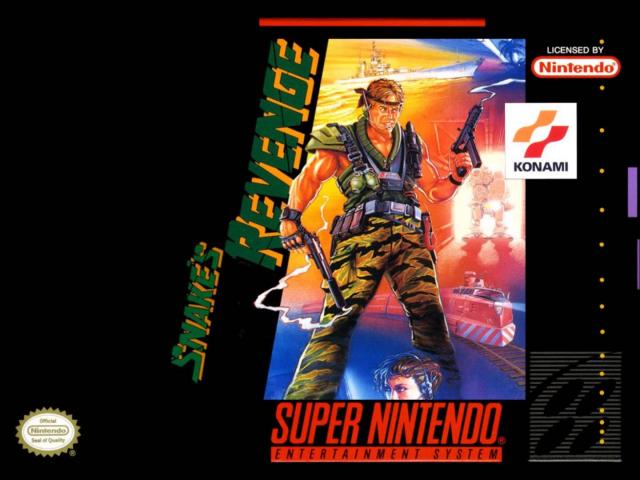
However, the game Konami decided to make was Snake's Revenge, which was created without any involvement by Hideo Kojima, who was initially not even made aware of it development, despite it being based on his creation. It was only ever released in the West and has never had any notable influence on the rest of the series.
In addition, upon finding out about the game, Kojima decided to start development on his own continuation of the first Metal Gear, making Snake's Revenge even less significant in the series' history. Today it is considered at best an unofficial sequel to the first game, and is rarely brought up alongside the rest of the series. It has also never been rereleased on any other platform since its original release, making it even easier to ignore.
The Real Sequel: Metal Gear 2

As mentioned above, Kojima began work on a sequel to Metal Gear when he learned that Konami was already producing another one without his involvement. He actually learned of what would become Snake's Revenge from another Konami employee working on the project at the time, during a chance meeting on a train journey. Prior to this he hadn't had any plans to develop a sequel, but spurned by that chance meeting he quickly came up with the basic concept, and after presenting the idea to his bosses at Konami, started work on Metal Gear 2: Solid Snake.
Taking place in 1999, four years after the events of the first title, Solid Snake returns from retirement (a recurring theme in later games as well) to take on one more mission, this time in a recently-established Central Asian country called Zanzibarland. There he must prevent an oil crisis the leaders of that nation seek to create by withholding their oil reserves from the rest of the world. While there he discovers that a familiar adversary is behind everything once again.

Solid Snake significantly improved upon nearly every aspect of the original title, using the elements introduced in Metal Gear as a jumping off point to further develop both the gameplay and story aspects of the game, while also going thematically into more complex directions with its plot. The story completely ignores the events of Snake's Revenge, relegating it to a non-canon status from this point on.
The gameplay in Metal Gear 2 is at its core very similar to the first game. It once again has the player infiltrating an enemy stronghold where they have to avoid detection and capture, but includes some notable improvements to the mechanics as well. Guards are no longer tied to a single screen, have a wider field of view thanks to being able to turn their heads, and can even detect noises, making the stealth aspect much more challenging this time around.
The player is also given new abilities, such as being able to crouch and crawl, allowing for new ways to stay hidden and move around more silently. The game also adds a variety of new items for Snake to use, and has noticeably better graphics, getting much more out of the already aging MSX2 hardware.

Finally, it introduces several new notable themes to the series, while also building upon the ones already seen in the first title. The topics tackled include global politics, the ethics of warfare, and the effects of war on people, as well as issues such as the fear of nuclear war from the first game.
Metal Gear 2 was developed on a relatively quick schedule, as despite Kojima only beginning the planning for the title after hearing of Snake's Revenge, it actually came out just three months later, in July of 1990. However, unlike the first Metal Gear, it didn't see a western release of any kind at the time, as the MSX2 had by then become drastically less popular outside Japan. It wasn't until the release of Metal Gear Solid 3: Subsistence in 2005 that Metal Gear 2 was finally made available outside of Japan, in the form of bonus content found within Subsistence, and later in the HD rerelease of MGS3.
Do These Games Still Hold Up?

Two of them do, the other not so much. Metal Gear and Metal Gear 2 are still at least worth trying, even if only to see where many of the series' tropes originated from, but Snake's Revenge doesn't quite have that same aura to it, lacking most of what has always made the series stand out from other games of its kind. There's also the fact that Snake's Revenge really has very little to do with the rest of the series in any meaningful way. As a curiosity it might be fun to try it, but otherwise I recommend just sticking with the official entries.
While Metal Gear and Metal Gear 2 have a clear connection that carries over from the first game to the second - as the second builds upon the gameplay and story elements first introduced in Metal Gear - Snake's Revenge has no such connections. Its story is entirely isolated (there's almost nothing besides the main character to tie it to any other Metal Gear game), and the gameplay is mostly just a copy of the first game, with the few differences being just minor tweaks to the existing formula that was already in place.
The two games Kojima created, however, are still well worth going out of your way to try. The gameplay is relatively simple, but still enjoyable, and the stories were very well written, especially for their time, and serve as the basis upon which the rest of the series was built. One aspect I haven't yet mentioned is the music, which especially in the second game is very good, although naturally not quite on the level the series would go on to achieve.
Already at this point Kojima was building a very complex narrative with these titles, filled with discussions on difficult thematic elements which most games at the time weren't even thinking of addressing. It is easy to see how the seeds for the stories and themes of subsequent entries were already being sown, even if Kojima didn't originally plan to make more than one Metal Gear title. The work done with the first two games went on to pave the way for some genuine masterpieces later, and even though they may not be held in quite as high a regard, the first two Metal Gear titles made by Kojima are still decent even today.

If you're interested in playing the first two games in the series, the HD rerelease of Metal Gear Solid 3 is the best and easiest way to do so. Snake's Revenge, on the other hand, was only ever made available on the NES, so unless you can somehow find the original cartridge somewhere and have a working NES then the only real option to play it is through emulation.
Fun Fact
Around 1994 there were plans in place to release a third Metal Gear title for the 3DO, of all things. As we now know this plan never materialized, and it would be quite a few years more until another game in the series was finally released.
Additional sources:
- Hideo Kojima BusinessWeek Interview
- The Legacy of Metal Gear by 8Bit
- Hideo Kojima Gamers Today Interview
More Articles
Brill read mate. I've always loved MGS but never actually played these games! I'll have to give 1 & 2 a try through the HD Collection's version of 3.
Wow even back in the 90's konami was fucking pver kojima
A franchise that like Silent Hill will now be whored out to any two bit developer.
i love the Metal Gear Solid series. Cant wait of the Masterpiece "Death Stranding" for PS4 by Hideo Kojima and Norman Reedus !!








